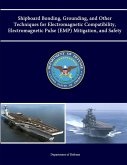US military forces depend on electronic systems and information dominance to produce overwhelming combat power. Indeed, defense leaders are calling for development of a network-centric force to rapidly deploy and conduct decisive operations in the future security environment. Unfortunately, the information revolution embraced by the military has a dark side-it introduces a potentially catastrophic vulnerability. Electronics, the foundation of the network-centric force, are extremely vulnerable to a rapidly proliferating class of arms--electromagnetic pulse (EMP) weapons. EMP weapons come in many forms and levels of sophistication. Some can be built from readily available parts for a few hundred dollars, some require extensive technological expertise and research facilities, and the most effective require both the capability to build a nuclear device and the ability to launch it with a missile. While recent literature has proclaimed that the sky is falling in regard to US vulnerability to EMP, the truth is that not all EMP weapons produce catastrophic effects on all systems. The goal of this paper is to classify near-term EMP threats to US expeditionary operations in terms of their probability of use, lethal range, systems they affect, and their potential users to identify high-payoff protective measures. The paper makes specific recommendations on cost effective solutions to address the most likely and most dangerous threats.








